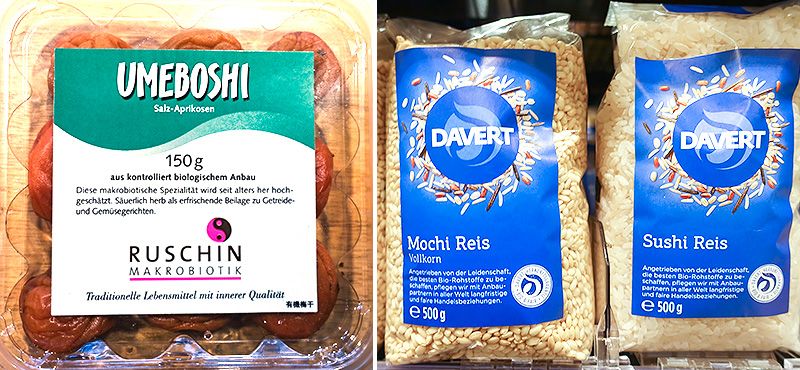
A Boy Named Bonsai
Society Culture- English
- 日本語
- 简体字
- 繁體字
- Français
- Español
- العربية
- Русский
For most of the modern era, the linguistic balance of trade between Japan and the West has been fairly unequal. The transfer of knowledge from the West, accompanied by the assimilation of new vocabulary, was an inherent part of Japan’s modernization. Since the late nineteenth century, countless loanwords from Western languages have become central to Japanese. Compared to these words’ sheer number and the multitude of ways in which they have been integrated, the flow of Japanese words into Western languages has been of a relatively manageable volume.
Naturally there were exoticisms—in the literal sense of things that do not exist in other cultures, as well as the technical—so that words like kimono, geisha, samurai, and shōgun found their way into European languages long before the 1868 Meiji Restoration through the writings of Western authors on “things Japanese.” Also, many countries have imported Japanese cultural assets. Think of how the traditional haiku has been adopted by Russian, Tagalog, Czech, and countless other languages in which it has become productively assimilated into the local poetic tradition. More recent examples from the commercial realm include Tamagotchi, an invention that spread globally together with its Japanese name, and the Walkman, exported and accepted internationally under a quasi-English appellation created in Japan.
Over the last decade or so, Japanese linguistic exports have multiplied remarkably against a background of accelerating globalization and through a host of channels and strategies. This development may not attract much attention, as the evidence is quietly embedded in everyday language. Yet it is both worthwhile and entertaining to examine the fields in which Japanese has made its way into other languages. Let us take German as a case in point.
The Triumph of Sushi
Cuisine leaps to mind as the area of the German language in which Japanese words figure most frequently and prominently. This can be traced to a number of factors. The triumph of sushi since the late 1990s has accustomed people in Germany—and in many other regions of the world—to all kinds of formerly unknown ingredients, which were adopted as foreign words and are now recognized by young and old alike. These include sashimi, wasabi, shiso, and wakame; fish like buri and hamachi; gari (pickled ginger); and various kinds of maki (rolled sushi), such as gunkan maki. The words yuzu, ponzu, and dashi have become familiar to German speakers and diners, together with their tastes, as has the notion of umami. Famous German cooks, who may have completed apprenticeships in Kyoto or Tokyo, vie with each other to produce the most original menus with a Japanese touch, including bentō-box courses or an exquisite matcha, azuki, goma (sesame), or wasabi-flavored dessert.
 Umeboshi pickled plums and rice in both glutinous mochi and sushi varieties are just some of the products on German supermarket shelves that feature unglossed Japanese names.
Umeboshi pickled plums and rice in both glutinous mochi and sushi varieties are just some of the products on German supermarket shelves that feature unglossed Japanese names.
These upmarket menus may not be affordable or even desirable to the average consumer, but he or she is likely to encounter most of their ingredients in one form or another in magazine and media reports; in the local supermarket, where takeout sushi boxes have chic Japanese names like take, ume, kabuki, and bunraku; or in the menus for the booming delivery service industry. Japanese vegetables such as shiitake, enoki, and mizuna also attest to the successful export of the nation’s food. Words come with commodities: a similar pattern can be observed in pastimes like Japanese sports, gardening, games, and manga. Jūdōka and the sumō throwing technique uwatenage have entered the German lexicon, as have momiji (maple leaves) and koi carp. Young children learn phrases from manga and their favorite Japanese characters and may even test their knowledge of everyday phrases like konnichi wa or daisuki on Japanese-looking passers-by in the streets.
Another kind of Japonism can be seen in the names of products, brands, shops, and businesses. Restaurants are a prime example, with names like Akiko, Ryorii, Cocolo, Kuchi, Moshimoshi, and Miyabi. Please note that the irregular and sometimes odd spellings given here are faithful renderings; it could well be that this ostentatious deviation is part of the marketing strategy. A Berlin bonsai center goes by the name of Suteki (“wonderful”). A makeup brush with orange artificial hair is called Kabukki, a document shredder answers to Bonsaii, and a down sleeping bag for hikers has the brand name Hibachi. The Japanese words are not necessarily tied to their original meanings, but their attractive sound and easy pronunciation seem to work in tandem to spur on this trend. People identify these words with expressions picked up from manga, video games, and other fun pastimes. In this way, Japanese and Japanese-sounding terms gradually lose their foreign quality and naturalize into a German context.
More exciting, however, than the mere familiarity of Japanese names and terms in a globalized everyday consumer world is the fact that some develop a life of their own in their new linguistic environment. Words and expressions are increasingly employed in new contexts and creative ways, which harness the freshness of their foreign origin.
New Uses for Japanese Words
Apart from the above-mentioned terms, which pertain to various aspects of everyday life, a large group of abstract nouns have also found their way into German and other European languages. Words like tsunami, harakiri, hikikomori (social withdrawal), and karōshi (death by overwork) carry fairly dark connotations. Even so, they readily offer themselves for use in many contexts. It appears to be an eye-catching paradox that a Berlin bar should have the name Caroshi, but it is not the only business to make use of the word. There is a communications agency called Karoshi in the same city too—presumably an ironic appellation.
Harakiri is undoubtedly the best known of these words, with a long history in German that could merit an article of its own. Director Fritz Lang’s silent German movie Harakiri, a 1919 adaptation of the Madame Butterfly story, represents just one stage in the word’s European history since the nineteenth century. Today, harakiri is used by speakers of all generations in any context to indicate a moment of entirely conscious self-destruction. There may be discussion of political, economic, or social harakiri in the media or in everyday adult conversation, and even schoolchildren might use the term when talking about sports or other topics in the classroom. Because of its casual and frequent use, the word has lost much of its dramatic flavor—meaning, for example, that newspaper journalists may regard it as harakiri for a soccer team to focus solely on the Champions League.
Tsunami’s international career is much more recent, having become established through a number of extensively reported disasters since the turn of the millennium. Like harakiri, it can be readily adapted for describing a range of overwhelming experiences. The term is a favorite among journalists, who speak of a “tsunami of joy” when the national soccer team’s members make a triumphant return to Germany after success abroad, or of a “tsunami of opinions” on the Internet.
 The term bonsai provides the nickname for the title character in this novel of youthful self-discovery by Christine Nöstlinger.
The term bonsai provides the nickname for the title character in this novel of youthful self-discovery by Christine Nöstlinger.
Bonsai is one of the most useful German neologisms. It serves as a figurative expression for anything that is smaller than expected or deemed appropriate. As well as a 1997 German young-adult novel titled Bonsai, three works with the same name have been translated into the language from English, Danish, and Spanish, respectively. Bonsai phenomena are common in the political sphere. There is talk of “bonsai nationalism,” “bonsai opposition,” a “bonsai demo,” and “bonsai news,” the latter referring to Twitter. The German military is ridiculed as a “bonsai army,” while Simon Rattle, conductor of the Berlin Philharmonic orchestra, referred to shorter compositions in the repertory of his 2014 New Year’s Eve concert as “bonsai masterpieces.” In the 2006 dispute about the reduction of the regular nine years at high school (“Gymnasium” in German) to eight, the president of the German teacher’s union described the planned new system as “Bonsai Gymnasium.” The cute, diminutive bonsai has also been used to modify “prose,” “novels,” “elephants,” and “shops.”
Language Flows Reversing Direction
What do we learn from all these examples? We can see that Japanese words are increasingly accepted in German, not only for food and other items for which no name previously existed, but also as fancy loanwords with an aura of freshness and exotic flavor. It is interesting to see which fields the borrowed words are found in and when the transfer took place. One dictionary of German words of Japanese origin, published in 2008, lists some 500 entries, but the majority of examples cited in this article are not yet included as they are of a more recent vintage. We may note, for example, that the many terms relating to Japanese food and cuisine are comparatively new and their adoption may have been encouraged by recent food export campaigns orchestrated by the Japanese government. By contrast, sports vocabulary is certainly older, although awareness of sumō and kendō has risen as a result of media coverage.
The growing acceptance of Japanese words and names is also remarkable in offering a small challenge to English loanwords, which still form the bulk of foreign vocabulary in German—a state of affairs that will certainly not change in the foreseeable future. Like speakers of Japanese, German speakers substitute English words for domestic vocabulary, due to the language’s perceived higher prestige. In the case of tsunami, however, existing German expressions were abandoned in favor of the suddenly popular Japanese term, which was circulating internationally.
The new trend can also be seen in the case of “takotsubo syndrome,” named for a Japanese octopus trap. This medical term refers to a cardiovascular disease in which the left ventricle of the heart takes the shape of the trap in question. In German, there is already the easy-to-understand expression “broken heart syndrome” taken from English. And yet, the Japanese term is preferred, even though takotsubo will certainly perplex speakers of German in more than one sense. First, as there is no similar fishing technique, and there are no octopuses in the Baltic or North Sea fishing grounds, it does not relate to anything that the average German speaker can make sense of. Nevertheless the University Hospital of Zurich in Switzerland has recently established a Takotsubo—not Broken Heart—Syndrome register in order to find out more about the disease’s gender specificity. Thus the term not only highlights the internationally acclaimed success of Japanese medical research but also indicates that in the twenty-first century at last, the international flows of knowledge have begun to change direction.
Evidence of this reverse trend is subtle; many may not recognize it. When a book published in 2016 by a well-known social scientist is titled The Darkness at the Foot of the Lighthouse, the allusion to a Japanese proverb may slip the notice of most readers, unless they see the note to this effect in the book’s preface. Let me conclude with another recent example. When a large national newspaper asked readers to name “untranslatable” words from other languages, someone suggested tsundoku, explaining that this means the habit of buying and accumulating books without ever having time to read them. Since the introduction of this expression, tsundoku appears every now and then in the print media or on the Internet as a word indicating the typical contemporary disease. Now, at last we have a word for it in German!
(Originally published in English on May 6, 2016. Banner photo: The Harakiri ski run at Austria’s Mayrhofner resort is said to be the world’s steepest groomed course. Courtesy Deirdren.)